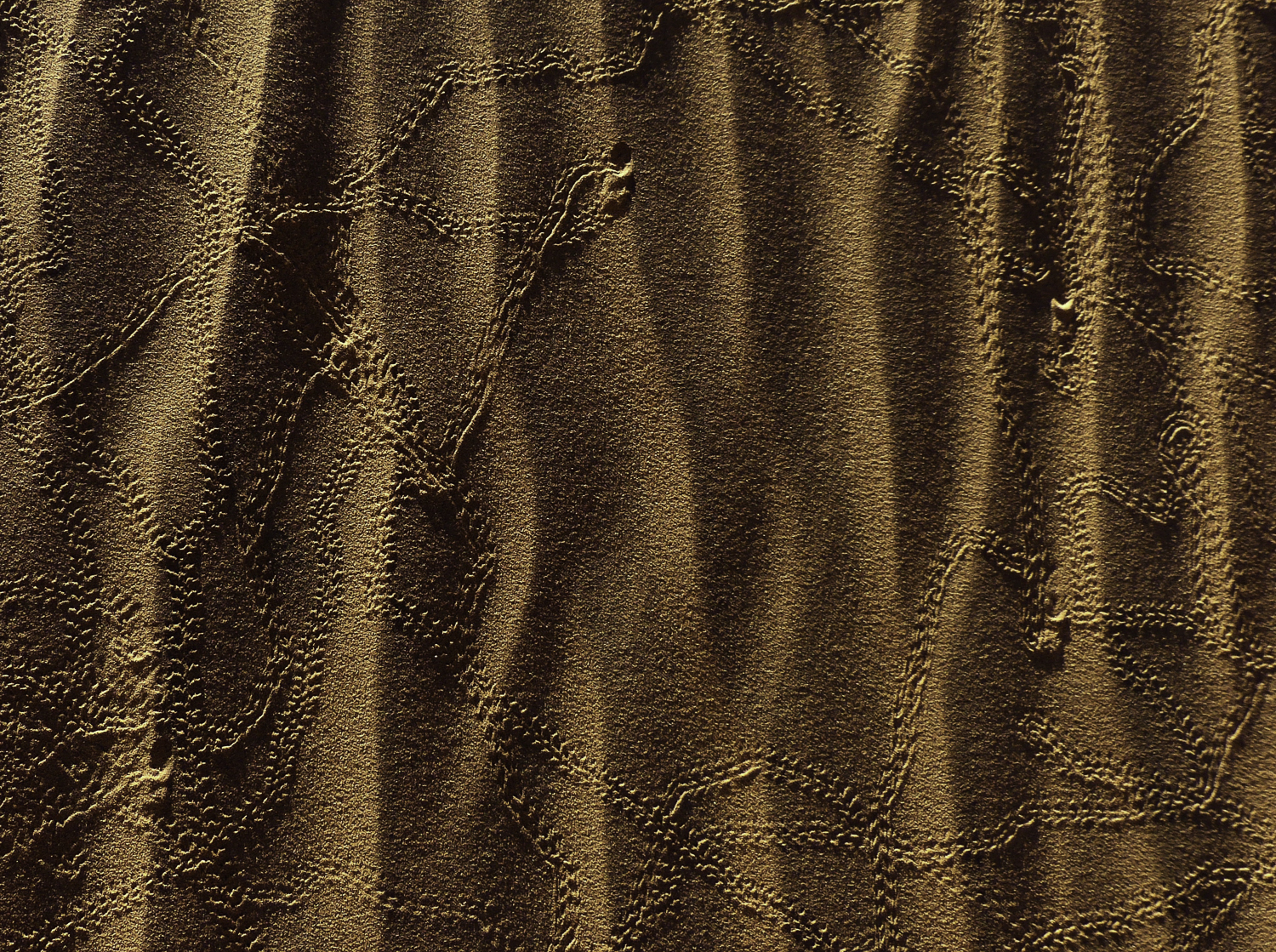E-Postcard #8: Life in the Sand (Namibia)
Rows 1, 2 and 3:
Travel with me to the dune country of Namibia. The dunes of the Namib Sand Sea cover most of the southwestern portion of Namibia, an area roughly 93 miles (150 km) wide and 248 miles (400 km) long. The largest dunes occur in the Sossusvlei area (2nd row; right photo). Little vegetation grows permanently in the “active” dunes because the sand is constantly being reworked by the wind. In the 1st row, note the wind-sculpted ripple marks in the photo on the left. As you see in the first photo, dunes that have stabilized manage to support a scattering of bunch grasses and a few succulent plant species that can store water in their stems and leaves. These starkly beautiful dune ecosystems support a surprising variety of insects, reptiles and small animals. Beetle tracks create extraordinary patterns on the dune “canvas.”
Please click on images below to enlarge.
Once enlarged, click the “X” top-right to close.
Fourth Row: (1) Look at the closeup photo of the sand and note that the individual sand grains of quartz appear “frosted,” much like the sea glass you find on the beach. The translucent frosting results from the rock-polisher effect of the individual grains bouncing against each other during sand storms. (2) The Namaqua chameleon is one of the largest chameleon species in southern Africa. Although its skin appears impermeable, it is functionally hygroscopic and can absorb (through capillary action) any moisture (fog or dew) that comes in contact with its scales. Chameleons are capable of changing color, but this species is distinctively grey or brown. with paler patches on its flanks and below the dorsal ridge. The ability to change color is an adaptation that aids in in thermoregulation. When temperatures are cooler, the skin color will turn almost black in order to increase heat absorption and will turn to a lighter grey to reflect light during the heat of the day. Depending on the chameleon’s orientation to the sun, it may show both colors at the same time, neatly separated left from right by the spine!
Row 5:
The web-footed gecko has soft, translucent skin with a salmon-colored undertone and light-brown stripes. Their coloring provides perfect camouflage in the powdery reddish sands of the Namib Desert, their primary habitat. The broadly webbed feet help them stay atop the sand, but also work like shovels when they need to dig a burrow or bury themselves in the sand to escape a predator. These geckos move surprisingly fast across the sand, and the adhesive pads on their toes make them excellent climbers. Strictly nocturnal, they spend the day in self-dug burrows and emerge at night to feed. Their eyes are massively oversized to help them detect prey, which includes crickets, grasshoppers, and small spiders.
Row 6:
My first introduction to sand treader camel crickets was in Colorado’s Great Sand Dunes National Park and Preserve more than 30 years, so I was delighted to see a new species in the Namibian dunes. As their name suggests, these crickets are superbly equipped for digging and moving about in the sand. Their large hind legs are armored with horny growths called sand baskets that enable them to excavate a burrow with lightening speed. If the Namibian species is anything like the the one in Colorado their sexual habits are especially intriguing. The male digs a burrow in the evening, hoping to attract several females to join his harem. Romance is a short term affair for camel crickets and by morning the revelers are off to other digs!
Row 7:
White lady dancing spiders are the famed “tap dancers” of the dunes, a species endemic to the Namib Desert. Their mating ritual, which gives the spider its name, begins with the male tap dancing on top of the female’s burrow. They are easy to spot because of their creamy white coloring, dancing (or tapping) movements, and their large size (about 5 inches). Mostly nocturnal in their hunting habits, they retreat to a burrow by day. With relatively poor eyesight, white lady spiders apparently use starlight for navigation across the dunes and for hunting.
To help build global awareness, we would appreciate it if you would share this post with your friends and colleagues. Please choose one of the options below which includes email and print! Thank you.

















Thanks so much, Audrey,, I’m delighted to be included on your E-Postcard list. Nature is always such a sustaining force in my life, and especially so right now. Your Namibia images remind me so of the time I’ve spent there…a unique world indeed.
Good being in touch, Audrey.
Hope you received the milkweed seed I sent to you a few days ago.
Thanks for taking me to Africa! This was my favorite so far, among your great postcards. A 5-inch spider is not to be missed!
I’m transfixed by the beetle tracks on the rippled sand!
This homeschool experience is unexpected!!!
Amazing photos and informative commentary is special.
Up close and personal with the creatures and their home is pretty COOL !!!
Thank you, Audrey for setting this up and for including me in your
virtual tours.
Second best thing to being there on the trips!
Be and stay safe
These pictures are amazing. Mel and I so enjoy your work. Miss you.
Audrey, my long-time friend, Annie Douden, forwarded #8 to me. I think your photography and commentary are very interesting. I applaud the mission you are on.
Please include me on your e-mail list if possible.
I am so happy to get these little bits of hope in my email. Thank you for including me!